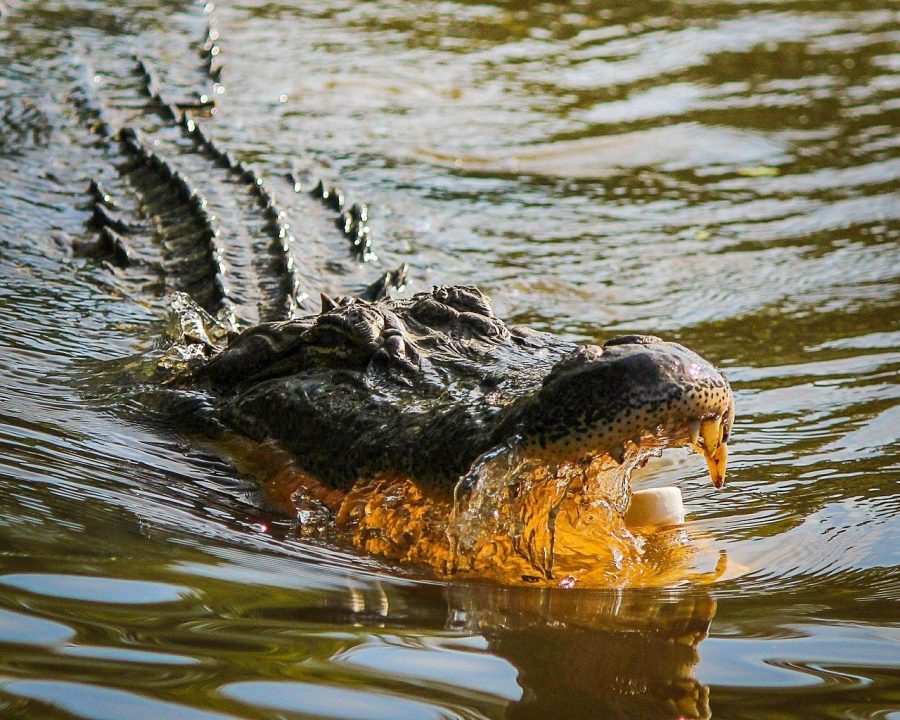By: Nigel Robert
While Florida is perhaps most likely to be mentioned by the general public as a punchline, it is unequivocally admired by reptile enthusiasts as the home of some of the most beautiful, rare, and breathtaking lizards, snakes, and reptiles in North America, if not the world.
Everglades National Park is perhaps the most famous place to get a glimpse of some of the incredible creatures that call Florida home, and it is true that many of the animals that live there cannot be found anywhere else in the world.
The entire state of Florida, though, is home to remarkable wildlife that is sure to make any amateur herpetologist thrill with excitement.
While even the common lizard species in Florida are worth a trip to see, there are also a few rarer species that will really put a feather in your cap if you manage to spot them on your trip through the Sunshine State.
- American Alligator: American alligators are only found in a few states in the American southeast, with one of the largest populations – over one million of them! – making their home in Florida. American alligators have a fearsome reputation, and it is not without cause; larger specimens have been known to kill humans, including adults. However, attacks in general, and especially fatal ones, are relatively rare. Most alligators are too small to view adult humans as viable prey, and, contrary to a popular urban legend, you do not need to worry about running in any zig zag pattern to avoid them – crocodilians do not hunt by chasing their prey. American alligators are not the only crocodilians to call Florida home; it is the only place in the world where both alligators and crocodiles (the similarly named but larger and more coastal American crocodile) live side by side. As the state reptile of Florida, though, the alligator is both more iconic and more common than its saltwater-favoring cousin. They make their homes in fresh and occasionally brackish water throughout the state; male alligators tend to prefer open waters, while the females favor swampy areas where they can better hide and protect their eggs. Almost any body of water in Florida, if it is large enough, might hold some alligators, but a trip into a national park or nature preserve, like the Everglades National Park, is probably the best bet for anyone intent on seeing one of the largest and fiercest reptiles in the world.
- Bluetail mole skink: While perhaps without the immediately spectacular impact of the larger reptiles in this list, the bluetail mole skink is actually the rarest and the hardest to spot, in part because of its small size (up to six inches in length). The bluetail mole skink is one of five subspecies of the mole skink, all of which are native to Florida. While the northern and peninsula mole skinks are found throughout almost all of Florida (and up into Georgia and Alabama), the bluetail mole skink is classified as threatened and is only found in the central interior of Florida; it occupies a similar scrub habitat as the more common sand skink. What makes the bluetail mole skink distinctive is the blue tail of the otherwise brown young lizards, although older lizards have brownish or pinkish tails. Males also develop an orange pattern on their sides during mating season in the winter. Unlike the sand skinks whose habitat they share, bluetail mole skinks hunt aboveground.
- West African Nile monitor: Unlike the other animals on this list, the West African Nile monitor is not native to Florida, or even to the United States. Like more than 60 other reptile species in Florida, most infamously the massive Burmese python, the West African Nile monitor is an invasive species, native, as the name suggests, to the banks of the Nile River in Sub-Saharan Africa. However, breeding populations of these large (five to seven feet in length) carnivorous lizards have been established in Lee and Charlotte counties since at least the early 1990s, and they have also been spotted in and around Palm Beach County. They favor Cape Coral and the nearby barrier islands in particular. The lizards are considered invasive because of their negative impact on the indigenous crocodilians (American alligators and American crocodiles) by raiding their nests and eating their eggs. However, anyone with an interest in large lizards would do well to take advantage of the opportunity to see them in the wild without mounting an expedition to the Sahara, especially since Nile monitors are among the animals least likely to thrive in captivity. The best chance of spotting them will likely be basking on sunny rocks near bodies of water. Nile monitors do not distinguish between fresh and salt water, but swim well and hunt in both, and usually stay near to water to make a quick escape from any potential threats.
Florida is among the most biodiverse areas in North America, and has a warm and wet climate that makes it a mecca for anyone with an interest in unique, rare, or unusual lizards and reptiles. Between both native and non-native species, any reptile enthusiast should find something to interest them in Florida, from the instantly recognizable icon of the American alligator to the smaller and less well-known, but gorgeous and fascinating lizards and snakes that all occupy their own niches throughout the wide variety of habitats across the state. Many of these beautiful creatures are unfortunately threatened by the encroachment of human development and the proliferation of damaging invasive species; luckily, efforts to save them will hopefully maintain the wild biodiversity for reptile enthusiasts and nature lovers the world over to visit and enjoy for decades to come.


